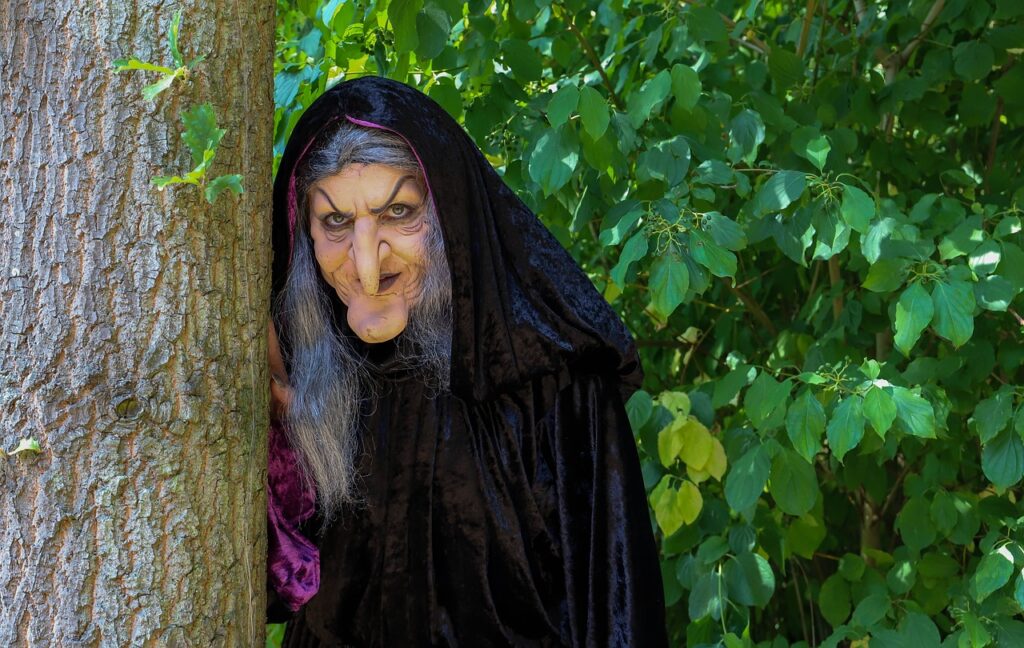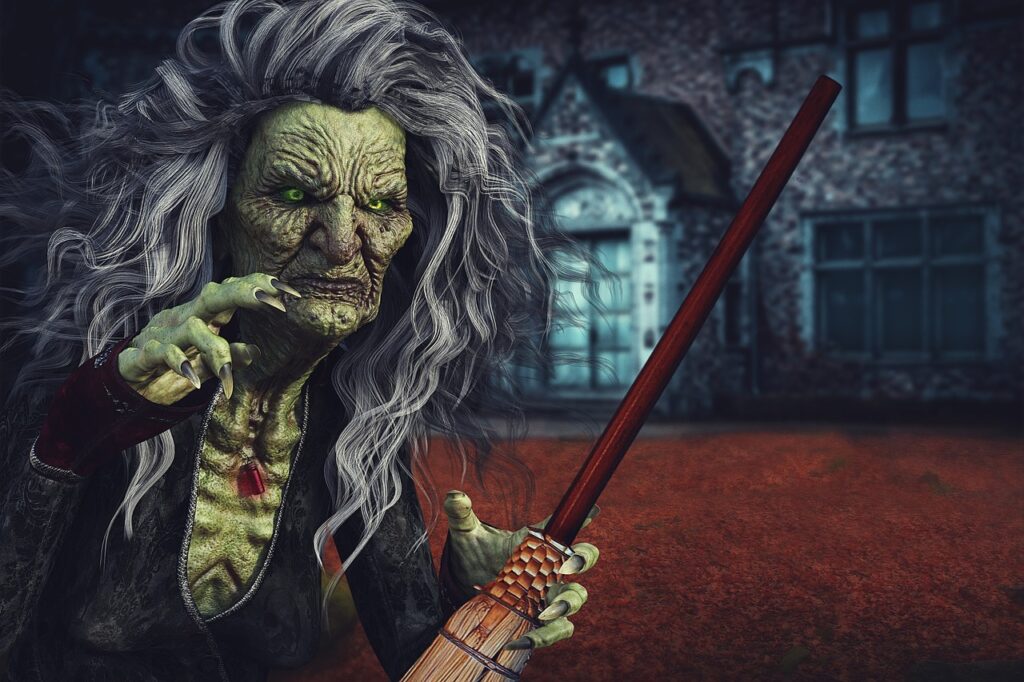The phenomenon of witchcraft is as fascinating to people as a fairy tale or a myth; it has always existed at the crossroads of the real world and people’s imagination. In various cultures and time periods, witchcraft is a diverse and complex phenomenon that ranges from evil to benevolent.
Even though the modern world may not focus on hatred and witch hunting as was done in the past, witchcraft beliefs are still present in today’s society, creating curiosity and concern among the people. Many wonder how to tell if someone is a witch in today’s context, as the fascination with the supernatural continues to persist.
Witchcraft, a concept that has evoked the interest of many people and also the dread of many, is a mysterious subject that has elicited much attention from people all throughout history. While some people see it in harmless ways, others see it as an evil thing. What, then, is witchcraft? And what are signs of witchcraft and reality Keep reading to find out!
Signs Of Witchcraft
The term ‘witch’ originated from a certain Old Saxon term ‘wicca’, the masculine equivalent of the term ‘wicce’, the feminine form. However, within the context of witchcraft, the word ‘witch’ is linked to a woman. A witch, by definition, is used to refer to a person or persons who have pledged to serve the devil or some form of evil power of that nature.
Witches were portrayed as people who could control objects of the physical world in supernatural and evil ways. Witches could also be the “good” ones who performed healing rituals, resolved fertility issues and practiced magic.
What Is Witchcraft?
Witchcraft has been a common term used to explain and define almost everything that has to do with magic, the spirit and the otherworld. It can differ depending on the cultural background, history and situation in which it is being used. Here are some possible ways to describe what witchcraft is based on different types:
- Traditional witchcraft: This term is mostly associated with magic and practices of culture, origin and tradition that exist in a particular community, including practices like herbalism, divination and spell-casting.
- Modern witchcraft: This includes modern witchcraft and Wicca, witchcraft and paganism, and eclectic witchcraft, among others.
- Spiritual witchcraft: This pertains to self-enhancement, attaining a higher state of consciousness, and communion with the divine through prayer, meditation, yoga, and energy healing practices.
- Shamanic witchcraft: So it integrates some features of shamanism, using the concept of journeying as well as using spirits, with the witchcraft practices.
- Hedge witchcraft: This term is associated with witchcraft that is more to be performed individually and is known to focus on factors such as folk magic together with natural remedies.
- Ceremonial witchcraft: This concerns more set procedures and rites, some of which come from the Western occultic systems.
- Chaos witchcraft: This is quite a new, postmodern approach that focuses on the notions of identity and artistic freedom.
Again, it must be mentioned that witchcraft does not have a one-and-only approach, and people might combine elements from different traditions and belief systems. Furthermore, witchcraft doesn’t have its roots in any religion, and most of the current practicing witches are atheists, agnostics, or spiritual but not religious.
What Are The Signs Of Witchcraft?

Defining witchcraft, or its presence, is based on historical components and differs from one culture to another. Nonetheless, some symbols have remained over the years, reflecting man’s endeavor to seek rational causes for incidents deemed irrational. Whether these signs are grounded on mere facts or superstitions, they have served important roles in the stories that have been constructed around the concept of witchcraft. Let’s take a look at these signs
1. Unexplained Illness or Misfortune
This is possibly one of the most frequently mentioned symptoms of witchcraft, where the affected person gets sick or misfortune happens to an entire household. In the past, such mishaps were blamed on curses or jinxes, negative magic that came to the affected individuals through the witch. This perception underpinned many witch trials and hunts because the inexplicable was taken as concrete evidence of witchcraft.
2. Appearance of Object or Symbol that is Unfamiliar to the Person
Another sign pertaining to witchcraft is when one finds objects or symbols that are strange within his or her reach. These could be strange markings on surfaces, some type of powder, or some object that is left at the doorstep. Contrary to modern generations, incidents like these were earlier regarded as indications of a witch’s work or as elements of a spell or curse.
3. Abnormal Behavior or Changes In Personality
Abnormal behavior or personalities that change drastically have been considered as signs of witchcraft. In the past, such changes were considered as certain signs that a person has sold his or her soul to the devil or was bewitched. This sign in particular stirred much havoc, especially during events like the Salem witch trials.
4. Recurrent Nightmares or Sleep Disturbance
Screaming, unconscious tossing and turning of limbs can be attributed to witchcraft, as the witches interfere with the most defenseless form of existence. Cultural lore also paints a picture where witches can even pay people a visit at night in their dreams, making it very hard to differentiate between realities and dream illusions.
5. Experiencing Unusual Psychic Phenomena
Sighting what seems beyond reason—for example, poltergeist activity, intuitive breakthroughs, or premonition—has been associated with witchcraft. These are considered to violate the perception of reality and in the past, people saw them as indicators of witchcraft.
6. Changes in Animal Behavior
Another sign of witchcraft is if an animal is observed to engage in actions that are not usual of that particular creature. Animals that tend to lose their sense of direction or display shivers without any apparent reason or cause—appearances of certain animals out of the blues—are taken as some acts of supernatural activities.
7. Witnessing Unusual Rituals or Gatherings
Anytime people come across secret meetings or the conduct of strange, unidentifiable activities, the practices of witchcraft are feared. Such events, watched with curiosity and even fear, are charged with mystery and authority that lie beyond human comprehension.
Physical Signs Of Witchcraft
- Body features such as tattoos or scars may be mistaken as witchcraft marks and symbols due to their odd features.
- Other transformations may include unusual development of hair on the head, facial features or change in eye color, which may lead to accusations of witchcraft.
- Flexibility, strength or coordinated movements may be overemphasized or, on the contrary, impaired.
Behavioral Signs of Witchcraft
- People switch or alter their behavior, especially becoming more reserved or experiencing mood swings, and it may be assumed it is witchcraft.
- Unaccounted days at work or being secretive can provide more cause for suspicion.
- People’s interest in spiritual or metaphysical practices may increase, and this may cause misunderstanding.
Psychological Signs Of Witchcraft
- Intuitions and vivid dreams can be regarded as witchcraft.
- Changes of mood, temporary disturbances, or swings in emotions may be wrongly diagnosed.
- More imagination may be frowned at or seen as negative.
Cultural and Historical Context
In some cultures, witchcraft is well practiced, and the resulting signs can be perceived as positive ones. This is due to various myths, misconceptions and actual fear which resulted from previous witch hunts and persecutions.
In many parts of Africa and Asia, natural disasters and disease outbreaks, death, and suffering are seen as signs of witchcraft. They also believe that witches are not aware of their evil acts and they carry them out unconsciously, but their victims do not agree with their point of view (Britannica, 2024)
History Of Witchcraft
Witchcraft is one of the compelling practices in human history that cannot be understood isolated from cultural, religious, and social transformations. It is a well-known fact that during the Egyptian, Greek and Roman periods, the craft of witchcraft was intertwined within their religion and were seen as people who had both white and black magic.
In the European medieval period, people connected witchcraft more to heresies and devilry due to the dominance of these concepts with Christianity. This period witnessed the craze of witch hunting, which, of course, spanned through the 15th and 18th century. The MALLEUS MALEFICARUM, which was published in 1487, was in fact a witch hunters manual on how to identify them, how they should be interrogated and even how they should be prosecuted. This led to terrorism in which people, especially women, were persecuted, tortured and put to death for witchcraft.
The best-known example of witch trials in the New World are the so-called Salem witch trials of 1692, which took place in the Massachusetts Bay colony in America.
In the contemporary world, people view witchcraft from a different perspective than before. Wicca, a modern pagan and witchcraft religion, appeared in the 1950s in England and distinguished itself with its focus on nature. Today, people perceive witchcraft as a historical and cultural phenomenon, and it is acknowledged as a part of folklore and for the role it played in the development of societies.
Conclusion
When looking for answers to the question, ‘What are the signs of witchcraft’, one should not jump to conclusions and should remain open-minded, taking into account cultural and personal factors.
Witchcraft, in general, is not simple or one dimensional and because of this, signs should not be condemned without thought. If one is able to distinguish myth from reality, chances are we can rid ourselves of prejudices and understand other people’s beliefs and practices.




